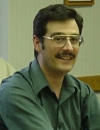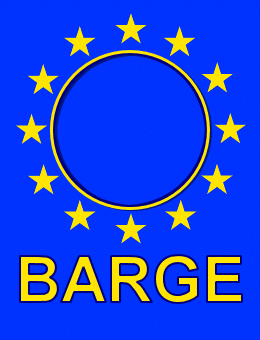BARGE member profile — Dr Nick Basta
 Dr Nick Basta
Dr Nick Basta
School of Natural Resources, Ohio State University
2021 Coffey Road
Columbus
Ohio
43210-1085
USA
Publications
Obrycki, J F, Basta, N T, and Culman, S W. 2017. Management Options for Contaminated Urban Soils to Reduce Public Exposure and Maintain Soil Health. Journal of Environmental Quality, 46 (2), 420–430
Obrycki, J F, Basta, N T, and Wilson, R S. 2017. Evaluating Public and Regulatory Acceptance for Urban Soil Management Approaches. Journal of Environmental Qualit, 46 (1), 20–26.
Obrycki, J F, Scheckel, K G, and Basta, N T. 2017. Soil solution interactions may limit Pb remediation using P amendments in an urban soil. Environmental Pollution, 220, 549–556.
Beyer, W N, Basta, N T, Chaney, R L, Henry, P F P, Mosby, D E, Rattner, B A, Scheckel, K G, Sprague, D T and Weber, J S. 2016. Bioaccessibility tests accurately estimate bioavailability of lead to quail. Environment Toxicology and Chemistry, 35(9), 2311–2319
Basta, N T, Busalacchiad, D M, Hundalb, L S, Kumarb, K, Dicka, R P, Lannoc, R P, Carlsonae, J, Cox, A E, and Granatob, T C. 2016. Phosphorus amendment efficacy for in situ remediation of soil lead depends on the bioaccessible method, 45, 74–83.
Jiao, Y, Bower, J K, Im, W, Basta, N, Obrycki, J, Al-Hamdan, M Z, Wilder, A, Bollinger, C E, Zhang, T, Hatten Sr, L, Hatten, J, and Hood, DB. 2016. Application of citizen science risk communication tools in a vulnerable urban community. International Journal of Environmental Research and Public Health, 13.
Obrycki, J F, Basta, N T, Scheckel, K, Stevens, B N, and, Minca, K K. 2016. Phosphorus amendment efficacy for in situ remediation of soil lead depends on the bioaccessible method. Journal of Envionmental Quality, 45, 37–44.
Henry, H, Naujokas, M F, Attanayake, C, Basta, N T, Cheng, Z, Hettiarachchi, G M, Maddaloni, M, Schadt, C, and Scheckel, K G. 2015. Bioavailability-based in situ remediation to meet future lead (Pb) standards in urban goils and Gardens. Environmental Science & Technology, 49, 8948–8958.
Kaiser, M L, Williams, M L, Basta, N, Hand, M, and Huber, S. 2015. When vacant lots become urban gardens: characterising the perceived and actual food safety concerns of urban agriculture in Ohio. Journal of Food Protection, 78, 2070–2080.
Li, J, Li, K, Cuia, X-Y, Basta, N T, Li, L-P, Li, H-B and Maa, L Q. 2015. In vitro bioaccessibility and in vivo relative bioavailability in 12 contaminated soils: method comparison and method development. Science of The Total Environment, 532, 812–820.
Sharma, K, Nasta, N T, and Grewal, P S. 2015. Soil heavy-metal contamination in residential neighborhoods in post-industrial cities and its potential human exposure risk. Urban Ecosystems, 18, 115–132.
Basta, N T, and Juhasz, A. 2014. Using in vivo bioavailability and/or in vitro gastrointestinal bioaccessibility testing to adjust human exposure to arsenic from soil ingestion. Reviews in Mineralogy and Geochemistry, 79.
Jardine, P M, Stewart, M A, Barnett, M O, Basta, N T, Brooks, S C, Fendorf, S, and Mehlhor, T L∥. 2013. Influence of soil geochemical and physical properties on chromium(VI) sorption and bioaccessibility. Environmental Science & Technology, 47, 11241–11248.
Juhasz, A L, Basta, N T, and Smith, E. 2013. What is required for the validation of in vitro assays for predicting contaminant relative bioavailability? Considerations and criteria. Environmental Pollution, 180, 372–375.
Koch, I, Reimer, K J, Bakker, M I, Basta, N T, Cave, M R, Denys, S, Dodd, M, Hale, B A, Irwin, R, Lowney, Y W, Moore, M M, Paquin, V, Rasmussen, P E, Repaso-Subang, T, Stephenson, G L, Siciliano, S D, Wragg, J, and Zagury G J. 2013. Variability of bioaccessibility results using seventeen different methods on a standard reference material, NIST 2710. Journal of Environmental Science and Health, Part A, 48, 641–655.
Minca, K K, Basta, N T, and Scheckel, K G. 2013. Using the Mehlich-3 soil test as an inexpensive screening tool to estimate total and bioaccessible lead in urban soils. Journal of Environmental Quality, 42, 1518–1526.
Whitacre, S D, Basta, N T, and Dayton, E A. Bioaccessible and non-bioaccessible fractions of soil arsenic. Journal of Environmental Science and Health, Part A, 48, 620–628.
Wragg, J, Cave, M, Basta, N, Brandon, E, Casteel, D, Denys, S, Gron, C, Oomen, A, Reimer, K, Tacke, K, and Van de Wiele, T. 2011. An inter-laboratory trial of the unified BARGE bioaccessibility method for arsenic, cadmium and lead in soil. Science of The Total Environment, 409, 4016–4030
Van de Wiele, T, Gallawa, C M, Kubachka, K M, Creed, J T, Basta, N, Dayton, E, A, Whitacre, S, Du Laing, G, and Bradham, K. 2010. Arsenic metabolism by human gut microbiota upon in vitro digestion of contaminated soils. Environmental Health Perpectives
Scheckel, K G, Chaney, R L, Basta, N T, and Ryan, J A. 2009. Advances in assessing bioavailability of metal(loids) in contaminated soils. Advances in Agronomy, 104, 1–5
Basta, N T, Scheckel, K G, Bradham, K D, Richey, J S, Dayton, E A, Whitacre, S W, and Casteel, S W. 2008. Soil chemical controls on arsenic bioaccessibility and bioavailability. Epidemiology, 19
Beak, D G, Basta, N T, Scheckel, K G, and Traina, S J. 2008. Linking solid phase speciation of Pb sequestered to birnessite to oral Pb bioaccessibility: Implications for soil remediation. Environmental Science & Technology, 42, 779–785
Hurdzan, C M, Basta, N T, Harcher, P G and Tuovinen, O H.. 2008. Phenanthrene release from natural organic matter surrogates under simulated human gastrointestinal conditions. Ecotoxicology and Environmental Safety, 69, 525–530
Basta, N T, Foster, J N, Dayton, E A, Rodriguez, R R, and Casteel, S W. 2007. The effect of dosing vehicle on arsenic bioaccessibility in smelter-contaminated soils, 42, 1275–1281
Brown, S L, Comton, H and Basta, N T. 2007. Field test of in situ soil amendments at the tar creek national priorities list superfund site. Journal of Environmental Quality,36, 1627–1634.
Beak, D G, Basta, N T, Scheckel, K G, and Traina, S J. 2006. Bioaccessibility of arsenic bound to corundum using a simulated gastrointestinal system. Environmental Chemistry, 3, 208
Beak, D G, Basta, N T, Scheckel, K G, and Traina, S J. 2006. Bioaccessibility of arsenic(V) bound to ferrihydrite using a simulated gastrointestinal system. Environmental Science & Technology, 40, 1364–1370
Beak, D G, Basta, N T, Scheckel, K G and Traina, S J. 2006. Bioaccessibility of lead sequestered to corundum and ferrihydrite in a simulated gastrointestinal system. Journal of Environmental Quality, 35, 2075–2083
Bradham, K D, Dayton, E A, Basta, N T, Schroder, J, Payton, M, and Lanno, R P. 2006. Effect of soil properties on lead bioavailability and toxicity to earthworms. Environmental Toxicology and Chemistry, 25, 769–775
Cave, M, Wragg, J, Klinck, B, Gron, C, Oomen, A, van de Wiele, T, Ollson, C, Koch, I, Reimer, K, Basta, N, and Tack, K. 2006. Preliminary assessment of a unified bioaccessibility method for potentially harmful elements in soils. Epidemiology, 17
Basta, N T, Ryan, J B, and Chaney, R L. 2005. Trace element chemistry in residual-treated soil: Key concepts and metal bioavailability. Journal of Environmental Quality, 34, 49–63
Lanno, R, Wells, J, Conder, J, Bradham, K, and Basta, N. 2004. The bioavailability of chemicals in soil for earthworms. Ecotoxicology and Environmental Safety, 57, 39–47
Schroder, J L, Basta, N T, Casteel, S W, Evans, T J, Payton, M E, and Si, J. 2004. Validation of the in vitro gastrointestinal (IVG) method to estimate relative bioavailable lead in contaminated soils. Journal of Environmental Quality, 33, 513–521
Rodriguez, R R, Basta, N T, Casteel, S W, Armstrong, F P and Ward, D C. 2003. Chemical extraction methods to assess bioavailable arsenic in soil and solid media. Journal of Environmental Quality, 32, 876–884
Schroder, J L, Basta, N T, and Si, J. 2003. In vitro gastrointestinal method to estimate relative bioavailable cadmium in contaminated soil. Environmental Science & Technology, 37, 1365–1370
Yang, J-K, Barnett, M O, Jardine, P M, Basta, N T, and Casteel, S. 2002. Adsorption, sequestration, and bioaccessibility of As(V) in soils. Environmental Science & Technology, 36, 4562–4569
Casteel, S, Evans, T, Turk, J, Basta, N, Weis, C, Henningsen, G, and Hoffman, E. 2001. Refining the risk assessment of metal-contaminated soils. International Journal of Hygiene and Environmental Health, 203, 473–474
Conder, J M, Lanno, R P, and Basta, N T. 2001. Assessment of metal availability in smelter soil using earthworms and chemical extractions. Journal of Environmental Quality, 30, 1231–1237
JConder, J M, Lanno, R P, and Basta, N T. 2000. Estimation of Cd, Pb, and Zn bioavailability in smelter-contaminated soils by a sequential extraction procedure. Journal of Environmental Quality, 30, 1231–1237
Basta, N T, and Sloan, J J. 1999. Bioavailablility of heavy metals in strongly acidic soils treated with exceptional quality biosolids. Journal of Environmental Quality, 28, 633–638
Basta, N T, Ryan, J A, and Chaney, R L. 1996. Reduction of excessive bioavailable phosphorus in soils by using municipal and industrial wastes. Journal of Environmental Quality, 34, 49–63
